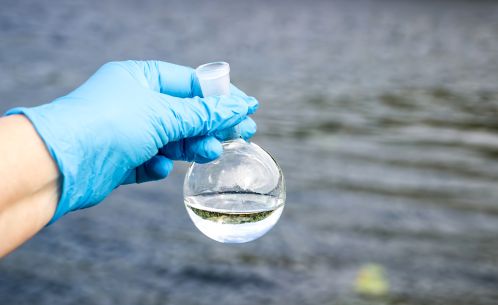People realize today that there is a lot of changes in climate. It causes long period of hot temperature at many places. The heat has far exceeded expectations, causing many heat stroke cases.
 In the past it was comfortable and joyful at change of seasons. For instance, it used to be a little rainy season during hot summer where it makes cool the heat down and also it would be a spring and autumn where greeneries and leaves that are changed in color for some longer period of time but it gets shorter. Further referring to rain, torrential heavy rains hovering in certain area has often occurred which cause huge damage to residents and impact social activities. Why do those happen? The answer is indeed deeply related to GHG (Green House Gas) emission which causes global warming.
In the past it was comfortable and joyful at change of seasons. For instance, it used to be a little rainy season during hot summer where it makes cool the heat down and also it would be a spring and autumn where greeneries and leaves that are changed in color for some longer period of time but it gets shorter. Further referring to rain, torrential heavy rains hovering in certain area has often occurred which cause huge damage to residents and impact social activities. Why do those happen? The answer is indeed deeply related to GHG (Green House Gas) emission which causes global warming.
For example, as the average global temperature increases, more water evaporates from the oceans and ground. Specifically, it is said that when the temperature rises by 1 degree Celsius, the amount of water vapor increases by about 7%. As the amount of water vapor increases, the amount of precipitation from heavy rainfall also increases, resulting in more heavy rainfall.
Thus, global warming is considered to be one of the causes of extreme weather events, and GHG include carbon dioxide, methane, and chlorofluorocarbons, with carbon dioxide having a particularly large impact on global warming. Carbon dioxide accounts for more than 75% of anthropogenic GHG emissions and is reported as the largest contributor in academic analyses. So what can be done to prevent it? As indicated by the Paris Convention, it is reported that a minimum environmental sustainability can be achieved by limiting the temperature increase to 1.5°C above the pre-industrial revolution temperature of the 18th century. Against this backdrop, people are becoming increasingly aware of the need to reduce carbon dioxide emissions by reviewing their means of transportation and saving electricity in their daily lives.
In addition to the awareness of transportation and power saving in daily life, water use is also closely related to global warming. Therefore, I would like to further consider water. When we use water, energy is used in various places, such as water purification plants to clean water, sewage treatment plants to purify dirty water, and pumps to deliver water to various places such as homes and schools, which generate CO2. In addition, even more energy is used to boil water. The water we use uses a lot of energy and emits a lot of CO2. So how can we reduce the energy consumption associated with the water we use?
There are many ways to think about this, but the first step is to make water as clean as possible. For example, as household wastewater becomes dirtier, more energy is used to purify the water to meet water quality standards for discharge after treatment at sewage treatment plants. Next is water conservation. This means constantly reducing the amount of water used to the minimum necessary. This is because increased water use will place a greater burden on water treatment plants, which will also use more energy to purify water than ever before. This approach applies not only to consumers but also to producers. In general, factories that use chemicals tend to use a lot of water for cleaning. By replacing these chemicals with ones that have as little negative impact on the environment as possible, water can be saved as a result.
In this issue, we discuss the changes in the water environment surrounding us, the causes of GHG, and the main causes and solutions for the increase in GHG, focusing on carbon dioxide and water. Let's start with what we can do to protect our safe and hygienic environment.
As an end of this column, I would like to introduce “Alliance for Water Stewardship (AWS) Standard“ to approach those water risks and preventions. In this standard, the objective is to drive water stewardship which defined as the use if water is socially and culturally equitable, environmentally sustainable and economically beneficial, achieved through a stakeholder-inclusive process that involves site and catchment based actions. Those shown in more detailed requirements are surely useful and helpful to approach on those concerning topics and agenda.
 Author: Hiroyuki Arie
Author: Hiroyuki Arie
AWS Auditor & System Div. Manager, TÜV Rheinland Japan Ltd.
Equipped work experience over 20years in food and beverage industry based on engineering educational background. Specialized in ISO certification service, Project Management, Food Safety and Supply Chain Assessment.
The content herein is the author’s opinion and not published on behalf of the Alliance for Water Stewardship (AWS). The author holds an AWS Professional Credential and this piece of publishing helps fulfil their Continuing Contribution Units requirements. For more information about AWS or the AWS Professional Credentialing Program please visit https://a4ws.org/.
Related article:


